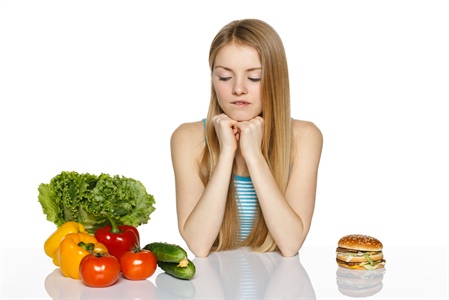The South Beach Diet Summarized
What is the South Beach Diet all about?
The diet was created by Dr. Arthur Agatston, a cardiologist in South Florida who was looking to develop a long-term diet plan for his chronically overweight heart patients. The diet involves building your meals around specific allowable and forbidden foods. After 3 unique phases are complete, the South Beach diet will help you achieve an optimal body weight and give you the necessary skills to maintain this new way of life.
The Glycemic Index is the science behind the South Beach Diet. The Glycemic Index, (or GI), ranks foods based on their effect on blood sugar in your body. For example, a potato is a very high-GI food and raises blood sugar very quickly after being consumed; berries have a low-GI rating, so they don't have an adverse effect on your blood sugar.
Phase One - Phase Out Bad Carbs and Fats
Phase 1: First 14 days: This is the strict part of the plan that outlines what you cannot eat. Basically, if a food is on the Foods to Avoid list - even if it is a highly nutritious or low-fat - you cannot eat it. The goal is to build meals around a selection of nutritious foods (prepared in a healthy way) that have a low GI. The purpose is to relieve you of cravings for sugar and starches. In these two weeks it is also possible to lose a considerable amount of weight. It is important to stay on Phase One for the entire two weeks, no less and no longer.
You will probably notice a loss of belly fat first. This is your body’s response to the diet. A shrinking waistline is an early motivating factor of the diet – you’ll be shopping for new pants in no time!
Who Should Follow Phase 1? This phase is for South Beach beginners, and for those in the later phases who find their weight loss has stalled.
Please note: Nursing women and children should consult a physician or pediatrician before changing their diet or their child's.
Forbidden Foods: Phase One
Foods you will give up include, but are not limited to:
1.Certain Meats and Poultry, including
Fatty cuts of beef
Prime rib
Dark meat chicken and turkey
Honey-baked ham
2.Certain Vegetables, including:
Beets
Carrots
Corn
Green peas
3.All Starches, including:
Bread
Potatoes
Cereal
Pasta
Rice
4.All Fruit and Fruit Juice
5.Whole Milk
6.All Alcohol
7.All Sweets, including
Ice cream
Baked goods
Candy
You will find a complete list of these "forbidden" foods in the book.
Foods To Eat: Phase One
The acceptable foods include, but are not limited to:
1.Certain Meats and Poultry, including
Boiled ham
Lean ground beef
Turkey and chicken breast
Canadian and/or turkey bacon
Low- and/or non-fat lunch meat
All types of seafood
2.Beans, including:
Black eyed peas
Great northern beans
Chickpeas
Pinto beans
3.A wide variety of vegetables, including:
Tomatoes
Squash
Onions
Mushrooms
Lettuce
Sprouts
Spinach
Okra
4.One serving of nuts each day such as almonds, cashews, or macadamia nuts
5.Low-fat cheeses
6.Eggs
7.Fats and oils such as olive oil, avocado, or mayo
8.Sugar substitutes
9.Treats such as sugar-free gelatin, hard sugar-free candy, and fudge pops
Phase Two
In this phase, you can now start eating some of those once “forbidden foods” from Phase One. You will continue to eat the Phase 1 acceptable foods as well. Foods returning to your diet will include low-GI fruits, whole grain bread and pasta, and low-fat dairy. You will continue to follow the guidelines set forth in Phase 2 until you have met your goal weight.
Foods To Eat: Phase Two
The acceptable foods include, but are not limited to:
1.Low-GI fruits, including
Apples
Bananas
Cantaloupe
Grapes
Oranges
Pears
2.Starches, including:
Whole wheat bagels
Whole wheat bread
Some cereals
Whole grain crackers
Whole wheat pasta
3.A variety of additional vegetables, including:
Green peas
Carrots
Potatoes
Pumpkin
Yams
4.Semi-sweet chocolate
5.Non-fat yogurt
6.Fat-free pudding
7.Wine (1 or 2 glasses a day)
Phase Three
Because you now have all the skills to properly maintain your weight, Phase Three allows you to go back to eating pretty much whatever you want. You will be able to determine the amount of carbs you can add back into your diet without gaining weight. If you see your weight does go up, cut back on carbs - you can even start the Phases over again.
You can view the complete article at http://astronutrition.com/blog/book/diets/south_beach_diet
-
If Diets and Weight Loss Programs Leave You Cold - Start Your Own!
Copyright ?Donovan Baldwin http://nodiet4me.comAnything that I wri
-
The Pros and Cons of Fat Burning Foods and Fat Burning Diet
Fat burning foods and fat burning diet are known to be effective in
-
How to Get Rid of Double Chin
Having a double chin can be very frustrating, especially since it is d
-
Obesity Surgery Becomes Option for More People
When you think of weight-loss surgery, what comes to mind? You pro
-
Is It Time To Lose Weight? How To Select A Weight Loss Program
A New Years resolution. A sudden panic attack when you realize your ol
-
Have A Weighty Problem? Check Out These Ideas!
You don’t need to worry all night about how much trouble w
- DON'T MISS
- The Best Apple For Weight Loss Is…?
- How To Avoid Stress
- Im dieting and to keep from eating between meals, Ive been drinking lots of juice and milk. But Im not losing weight. Am I doing something wrong?
- 4 Ways to Fail at Dieting and 4 Ways to Avoid Them
- How To Get Tight Abs Without Expensive Machines Or Crazy Crash Diets
- Fat is an Industry
- The Hungry and Overweight Paradox
- The Type Of Food And Nutrition That Can Help You Lose Weight Fast
- Reasons Why That HCG Diet Plan Certainly Works
- Tips In Finding the Right Healthy Weight Loss Program




